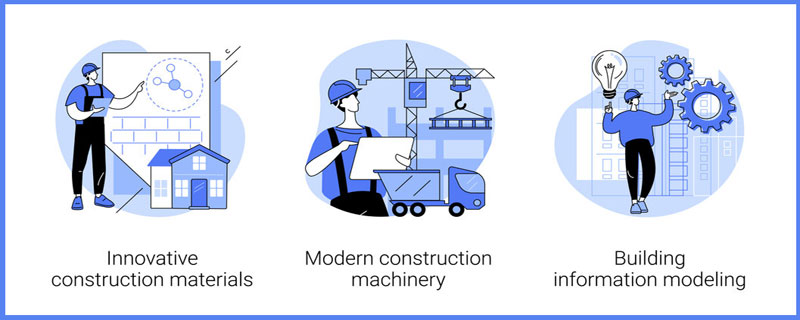It is without question that technology is transforming almost every facet of modern life. Our industry is of no exception to this rule. Construction methods are constantly being updated, modified and built upon, pushed into brave new terrain by the latest technological innovations. While the shifting future of the industry remains ultimately unclear, there are some trends that can be tracked, paving the way for futuristic advancements in specific fields. MMC Editor Joe Bradbury takes a look at 5 futuristic technologies that could revolutionise the way we build:
Construction technology trends whilst elusive, will always follow a predictable pattern: how to build faster and smarter, how to be more environmentally friendly and how to deliver a rich and diverse built environment that works for us in a variety of ways. Construction materials and inventions continue to advance; who knows what the future holds? With that in mind, here are some intriguing examples of futuristic materials that we may see more of as time progresses ever forward:
Transparent aluminium
The term “transparent aluminium” refers to a type of aluminium that is see-through.
When people talk about translucent aluminium, they usually mean AION (aluminium oxynitride), a ceramic alloy. However, aluminum can exist in an elemental, metallic form made transparent by bombarding with a soft x-ray laser.
Back in the 1980s, transparent aluminium was famously mentioned in Star Trek. Scotty sought to swap sheets of plexiglass for the formula for transparent metal in a classic scene from Star Trek IV: The Voyage Home.
Science fiction is now a reality, bringing many potential benefits for other future products. Perhaps it won’t be too long until this innovative material is available to and capitalised upon by the construction industry, bringing with it a whole host of new product opportunities.
Smart bricks
Smart bricks are comparable to ‘Lego’ in that they are modular connecting bricks. Smart bricks, which are made of high-strength concrete and developed by ‘Kite Bricks,’ are adaptable and offer significant thermal energy control as well as a decrease in construction expenses. They are straightforward to join and offer space for insulation, power, and plumbing because they are modularly designed.
Aerogel insulation
Have you considered using gel to insulate your construction project? We know that seems insane, but hang in there with us. Perhaps you should.
Although “gel” is commonly thought of as a wet substance, “aerogel” is an entirely different beast! Aerogels are low-density synthetic materials made by draining the liquid from a gel and drying it under specific conditions, avoiding the shrinkage and cracking that occurs during ambient evaporation. This results in a solid three-dimensional nanoporous structure that is virtually entirely made up of air – hence the name!
Aerogel is a flexible blanket insulation that can help reduce energy loss while also saving space in residential and commercial buildings. To achieve optimal energy efficiency, it’s often used for total coverage in walls, floors, and roofs, as well as in framing and windows.
Self-healing concrete
Self-healing concrete is a form of concrete that can fix cracks on its own. Concrete cracks are a regular occurrence due to the material’s poor tensile strength. These fissures reduce the durability of concrete by providing a convenient conduit for the passage of liquids and gases that may contain dangerous compounds. If microcracks become large enough to reach the reinforcement, not only will the concrete itself be harmed, but the steel reinforcement bars will corrode as well. As a result, it’s critical to keep the crack width under control and to cure the cracks as quickly as feasible.
Self-healing concrete imitates the automatic healing of body wounds. Some specific elements (such as fibres or capsules) containing adhesive solutions are poured into the concrete mix to make self-healing concrete. When cracks appear, the fibres or capsules break, and the liquid within them immediately heals the crack.
Robotic swarm construction
Robotic swarm creation was developed by Harvard academics and is based on how termites function. Termites work as a’swarm,’ and construction robots are taught to do the same.
Four-wheeled robots are designed to develop a specific design in each case and are equipped with sensors that detect the presence of other robots, allowing them to collaborate.
In summary
We’ve seen a sequence of building material advances throughout history in the construction industry. These materials, considered radical at the time, affected the way we construct today and influenced some of the greatest architectural accomplishments of humanity. This ever-evolving sense of progress is in itself nothing new, it is the great motivational force that guides us forward into the unknown. There are always fresh, cutting-edge materials, just on the horizon, waiting to propel us forward into a new age of construction!





Leave a Reply
Want to join the discussion?Feel free to contribute!